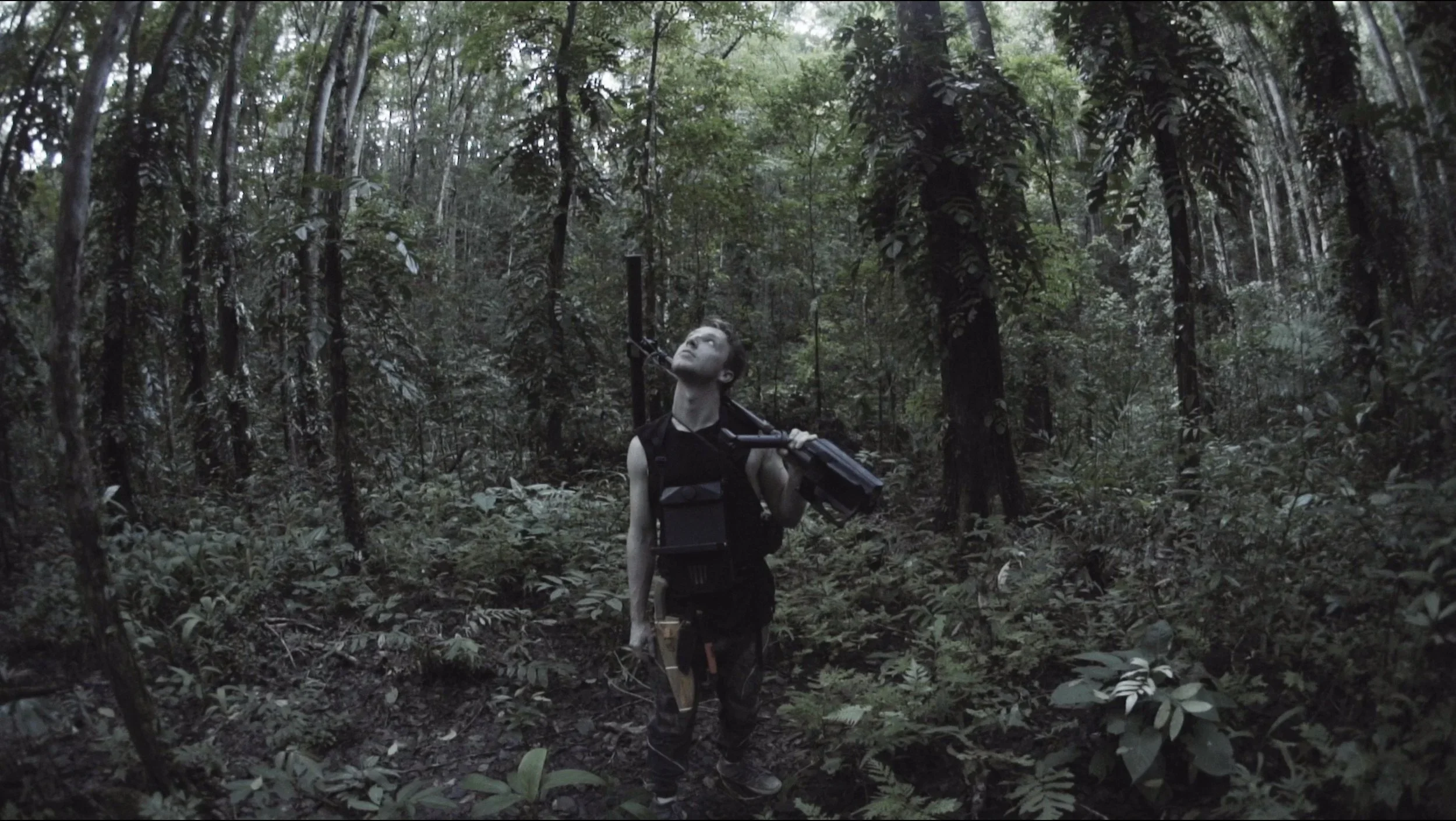It’s Wet Season: 12 Movies to Watch on a Rainy Day
It’s Wet Season: 12 Movies to Watch on a Rainy Day
In a country that repeatedly faces the reality that rain brings more worry than calm, being able to enjoy it is, truly, a luxury not everyone can afford. Memes aside, what Parasite showed us couldn’t ring truer in the Filipino setting, there’s a quiet privilege in watching the rain fall from the assured safety of a home.
For some, abrupt thunderstorms mean canceled outings, disrupted photoshoots and a cozy bedtime; for others, they mean flooded streets, a consequence of an incompetent drainage system, and the stressful resignation of wondering where, if anywhere, would be safe enough to sleep for the night.
But if you happen to find yourself indoors, warm and safe — as everyone deserves to be — maybe a good movie can offer a modest kind of comfort. Not to turn away from the heavy downpour outside, but to help you breathe through it. Because in a time when safety is unevenly guaranteed, even a story on a screen can hold a little kindness.
With the rainy season here, SINEGANG.ph rounds up movies to gently lean on.
Robert Pattinson as Batman in The Batman
The Batman (2022)
Dir. Matt Reeves
“Thursday, October 31st. The city streets are crowded for the holiday, even with the rain.”
Set against Matt Reeves’ rainy and grim vision of Gotham City, The Batman, featuring Robert Pattinson as the Caped Crusader in his second year, perfectly embodies the tone of a noir detective story. Gotham is portrayed as dark, wet, and haunted by injustice. From the criminal underbelly beneath the Iceberg Lounge to The Riddler’s methodological ways of crime, Gotham becomes a character that exposes the true nature of the characters who inhabit it. The near three-hour runtime takes a slow-burn approach that focuses on mood, character development, and immersive world-building. Before the coffee or tea gets cold, you’re in for a well-stuffed with a cinematic experience featuring the World’s Greatest Detective. — Ralph Regis
Goldie Hawn as Helen Sharp and Meryl Streep as Madeline Ashton in Death Becomes Her
Death Becomes Her (1992)
Dir. Robert Zemeckis
On rainy days, I tend to gravitate towards more fun, macabre dark comedies. I think that it has to do with the dampness and the cold, which makes for a perfect atmosphere to watch these films. I find this is one of Robert Zemecki’s underrated offerings that has slowly gained a cult following, and I understand why: Death Becomes Her is a weird film with a lot of exaggerated special effects, and if you think about it, it’s kind of dark. But I also think it’s one with a lot of wit and charm and much to say about the way women move through and are treated by society when it comes to their beauty. I love all the performances in this film. Meryl Streep and Goldie Hawn just go at it with wicked cattiness, and Madeline and Helen are perfect for each other (take that however you like). Bruce Willis is very funny here as well as a bumbling nerd who knows these two beautiful women. It’s weird, it’s funny, and the perfect watch for if you want something that appeals to a darker sense of humour on a rainy day. — Gab Aniceto
Hitoshi Omika as Takumi in Evil Does Not Exist
Evil Does Not Exist (2023)
Dir. Ryusuke Hamaguchi
What remains most affecting in Evil Does Not Exist is not the human drama alone, but the rhythmic and wordless presence of the landscapes that surround it. The film’s emotional weight rests in Mizubiki’s natural textures—the slithering mist, the cobwebs of branches, and the scent of local udon—which gesture toward an enduring, impersonal force than any peripheral conflict. Although Ryusuke Hamaguchi is known for his masterful character-driven storytelling, as seen in the critically acclaimed Drive My Car, it’s his attention to Mizubiki’s landscape that ultimately shoulders the film’s narrative tension between villagers trying to protect their home and outsiders whose overreaching ambitions threaten to destroy it. Hamaguchi’s camera observes these sceneries, experimenting beyond his usual framing and sound to confront the invasive reach of capitalism that feeds off anything ought to remain unspoiled, both land and spirit. Evil does exist and it's naive to think it can be killed with a gunshot, but still, we get to decide whether it should drift further downstream. — Joshua Jude Ubalde
The front entrance of the Fu He Grand Theater in Goodbye, Dragon Inn
Goodbye, Dragon Inn (2004)
Dir. Tsai Ming-liang
“Human beings are like plants. They can't live without water or they'll dry up. Humans, without love or other nourishment, also dry up. The more water you see in my movies, the more the characters need to fill a gap in their lives, to get hydrated again.” —Tsai Ming-liang
Rain is a prominent motif in Tsai’s films, and Goodbye, Dragon Inn is no different. It’s a film that shows how cinema is many things to all people: a haunted place where its decades-old decay shows in its lack of changes and leaky ceilings; a workplace environment where those who run the place can't help but find themselves mesmerized in their own showings, only to shake themselves off after remembering that they have a job to do; a place of love and longing where one will go far just to share them half of a steamed bun. Tsai knows that theaters have their own world, and laments whenever these worlds end. Times haven’t always been easy, and the rain shows no signs of stopping, but the movies somewhat lift the burden we carry and ease these tumultuous waters. And the least he could do is a tribute to those who have kept cinema alive, and he accomplishes it in pure, meditative Tsai fashion. — Justin Caunan
Josh Hartnett as Kline in I Come with the Rain
I Come with the Rain (2009)
Dir. Tran Anh Hung
An obvious choice from the title alone, I know, but Tran Ahn Hung’s neo-noir thriller perfectly encapsulates the moodier vibe that comes with the season. A private investigator, a serial killer, and a man possessing supernatural healing abilities embark on an odyssey of sex, violence, and religion against the backdrop of an aggressively humid Mindanao and Hong Kong. I Come with the Rain masterfully delivers a sensory experience with its dream-like scenes underscored with rock instrumentals from bands like Radiohead and Godspeed You! Black Emperor creates a pervasive sense of angst that looms like a dark cloud over the minds of our set of characters. The film also makes perfect use of its setting, highlighting the inherent music in a bustling city or a rural neighborhood. Suddenly, the honking of cars in traffic and the roaring thunderstorm outside your window carry their own melodic charm. — Andrea Cello
Pitobash in Kalira Atita
Kalira Atita [Yesterday's Past] (2020)
Dir. Nila Madhab Panda
A personalized piece of agitprop, Kalira Atita explores the effects of climate change through the growing madness of a grieving man. Having personally experienced increasingly worsening floods in my hometown of Bulacan, this film, which tackles the reality of enduring natural disasters and its toll on one's spirit and sanity, really resonates with me. Climate change is not a political talking point, it's an existential crisis. — Ian Cruz
Christopher de Leon and Hilda Koronel in Kung Mangarap Ka’t Magising
Kung Mangarap Ka’t Magising (1977)
Dir. Mike de Leon
I've never been to Baguio, but I often wonder how rain feels like there during monsoon season. How would a drizzly walk in the City of Pines compare to walking in Cebu where I live and where streets are quickly washed by floods? There’s just little to no room for romance amid a harsh downpour and an awful drainage system. In Mike de Leon's Kung Mangarap Ka't Magising, we get to see quite a dreamlike glimpse of rainy Baguio as we follow Ana (Hilda Koronel) in her brief respite from a strict marriage. There she meets Joey (Christopher De Leon), a laidback college student who aspires to be a musician. They both long for escape, a desire felt especially in their iconic rain-swept stroll along the hills where they huddled together under an umbrella and shared each other’s worlds, even if just for a fleeting while. — Jea Nicole
Film still from Lagi na lang Umuulan sa Probinsya
Lagi na lang Umuulan sa Probinsya (1999)
Dir. Austin Tan
The climate crisis in recent interpretations has become personal, bridging gaps into the very personal and intimate spaces, as the disaster slowly takes away everything dear. Austin Tan’s Lagi na lang Umuulan sa Probinsya situates the climate crisis anxiety with the lingering uncertainty of the future and leaving loved ones behind. It spectates rather than intervenes, letting the disaster unfold itself reflecting a systemic neglect. It asks itself difficult questions of leaving and wishing for the crisis to stop as another one approaches. The constant rain sets a reminder of an impending, uncertain future that awaits everyone. — Christ Dustly Go Tan
Jessica (Tilda Swinton) with the fish monger Hernan (Elkin Díaz), marvelling at the lush cloudy Colombian landscape in Memoria
Memoria (2021)
Dir. Apichatpong Weerasethakul
Transcending boundaries in Weerasethakul’s first foray to the other side of the world, Memoria transports the audience from the humid tropical landscapes of Thailand to the highlands of South America. Jessica (Tilda Swinton), a Scottish expat living in Bogotá, finds herself experiencing unusual sounds in her own head. Her experiences lead to bizarre conservations about life and death. Never mind the plot; focus on the film’s atmospherically gloomy landscapes of places that feel familiar yet foreign at the same time. It’s best experienced in a gloomy setting, in the warmth inside or near a brutalist building or somewhere in nature—a single watch on a stormy day is enough while forgetting its runtime, I would suggest. — Kyle Livelo
Ben (Duane Jones) fights off a horde of zombies in Night of the Living Dead
Night of the Living Dead (1968)
Dir. George A. Romero
Many people seem to find nostalgia a feeling that goes well with rainy days. However, when one tries to put on a film that conjures up the past, they often settle for stories that project waves of reminiscent joy or reflective mellowness. It’s awfully rare that one clicks play on a film that so expertly reflects the fears and anxieties of 1960s America, a time and place where the zeitgeist spelled out a social unrest brought on by the Vietnam War and the civil rights movement. With the timeless and brilliant Night of the Living Dead, however, an exception comes into play. It’s a famed centerpiece of modern horror, largely in part due to its role in popularizing the look and idea of the modern zombie, an insatiable flesh-eating undead creature whose rotting skin can be peeled back to reveal a well of metaphors, whether it be late-stage capitalism or fears of consumerism. Not only that, it is perfect as a backdrop to precipitation, because of its status as a familiar favorite of its genre, its simple yet striking black-and-white cinematography, and its all-enveloping, gloomy atmosphere. In the same way one fights fire with fire in the most dire of moments, one might need to fight grey days with even more grey. — Thandie Aliño
Ryosuke (Haruhiko Kato) and Harue (Koyuki) on a train in Pulse
Pulse (2001)
Dir. Kiyoshi Kurosawa
Outwardly grey at lowering temperature, but filled with warm-blooded terror and emotion, Kiyoshi Kurosawa’s 2001 rumination on the inherent loneliness of online connection has become more relevant than ever before as social media now permeates most of our day-to-day living. Equally so, this haunting ghost story, centered around the gradual descent of two individuals (and their circles) into the haunting spectre that has caused strange sightings, deaths, and disappearances, make for quite a chilling rainy day watch. The muted color palette and Kurosawa’s distinctly spacious, hypnotic direction creates a vibe specific to the early-aughts that not only grabs the audience through sheer tension and unease, but also an ever-present melancholia. When we feel the cold touch of either technology, industrial metal, isolation, and cloudy weather, companionship means a lot more than anything in this ever-divisive world. — Martin Yenko
Film still from ‘Tong Adlaw Nga Nag-snow Sa Pinas
‘Tong Adlaw Nga Nag-snow Sa Pinas (2022)
Dir. Joshua Caesar Medroso
As they grow up, children wild imaginations, no matter how out-of-this-world or unreal they are, as sources of escapism from the harsh realities of a life they wanted to live just for brief moments in time. Joshua Caesar Medroso’s ‘Tong Adlaw Nga Nag-snow Sa Pinas allegorizes the snow as one of these brief moments that offers comfort to the children. One can see the snow as a sign of reckless behavior, but it depicts limitations, a reflection of marginalization, and how one’s imagination can go so far for what they can know and see as their safe space. Not only does it fix on their imaginations, but it offers comfort by showing there is always a place they can resort to, a company that would just be fine. — CDGT





























